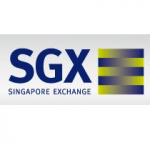
Throughout 2013, one of the trends we have been reporting is the growing significance of Singapore as a regional financial hub in Asia. An example was the country becoming the top Asian location for counterparty FX trades, according to the BIS 2013 Triennial Survey, besting Japan. As a result, it has attracted foreign interest in partnering with firms involved with Singapore’s capital markets. Among local firms, the Singapore Exchange (SGX) has attracted both Asian and global interest in its clearing facilities. The clearing partnerships allow the SGX to act as a third party central counterparty for clearing trades to non-Singapore companies. Among the SGX’s recent achievements was news from the CFTC that SGX Clearing became the first Asian clearing organization authorized by the derivatives regulator.
Following on the success of its clearing operations, the SGX stated that the unit continued to experience gains in January. During the month, SGX Clearing posted a 6% year-over- year increase of $6.9 billion in OTC financial derivatives transactions being cleared. Clearing volumes were led by commodities products which more than doubled from last year.
Contrasting to its clearing volumes, SGX exchange volumes declined in January. During the month, securities volumes fell 44% to $22.5 billion from the same period in 2013. Similarly, derivatives volumes declined to a total of 8.8 million contracts which was 7% below 2013 levels. However, the exchange continued to see increased interest for its emerging market equity index products as trading in the MSCI Indonesia and China A50 futures increased over 50% and 21% respectively. For retail CFD brokers, prices of the SGX’s line of equity index futures, which include India’s Nifty Fifty, MSCI Singapore, MSCI Taiwan, and MSCI Indonesia, are used by firms to create pricing for their CFDs of similar products being offered to clients as well as to hedge risk. As such, increases in volumes of the underlying equity index futures is important for brokers as it Leads to tighter spreads and additional Liquidity to serve their hedging needs.











